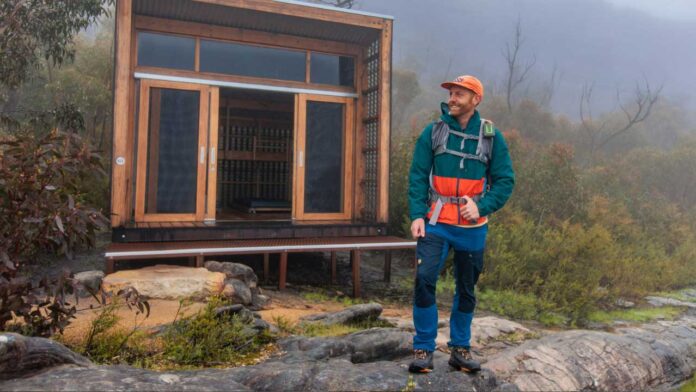Let's talk about what to wear hiking, beginning with underwear. And base layers. Everything you want to be wearing (as well as a bit of what not to wear) while enjoying a hike. Let's ditch that high-school hoodie and get into all of the cool clothes that are made specifically for the backcountry. By layering strategically, you can greatly enhance your comfort and preparedness. And where else can we possibly start than with the very first thing you'll reach for: underwear.
Base Layers for Hiking Clothes
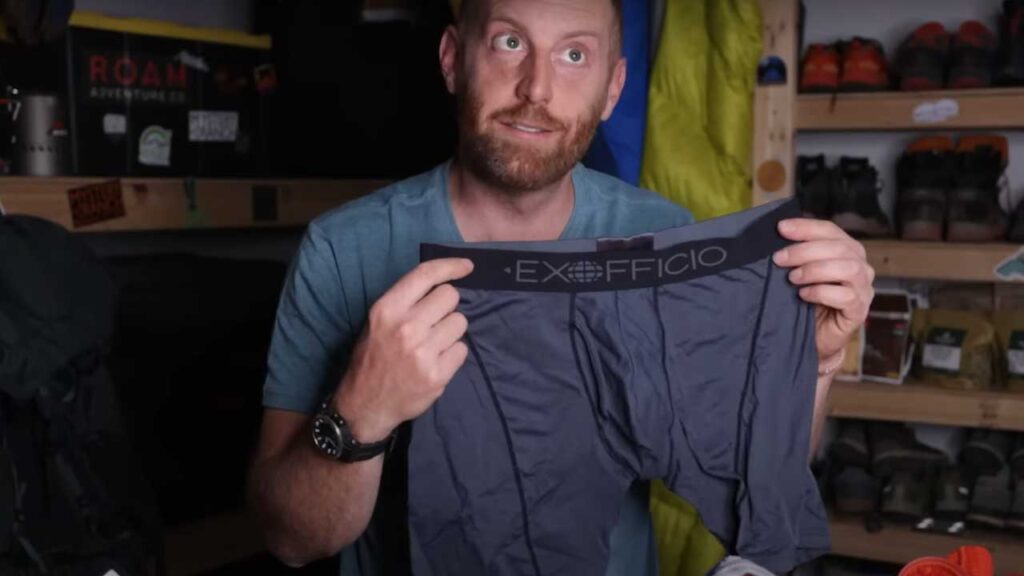
Underwear & Socks For Hiking Clothes
First off, don't cancel that Saturday group hike just because you don't have the highest-tech underwear around. You can totally hike in whatever you're usually happy in. I think your primary base layer is the best places to start If you're looking to upgrade hiking clothes.
Put simply, cotton does not deal with ongoing sweat very well. The moisture tends to sit, rather than evaporate, which will make your knickers feel extra sloppy. This will possibly cause you skin irritation where irritation is never appreciated. I've been rolling with the same handful of pairs of ExOfficio for eight years. They've been awesome and the support is still going strong.
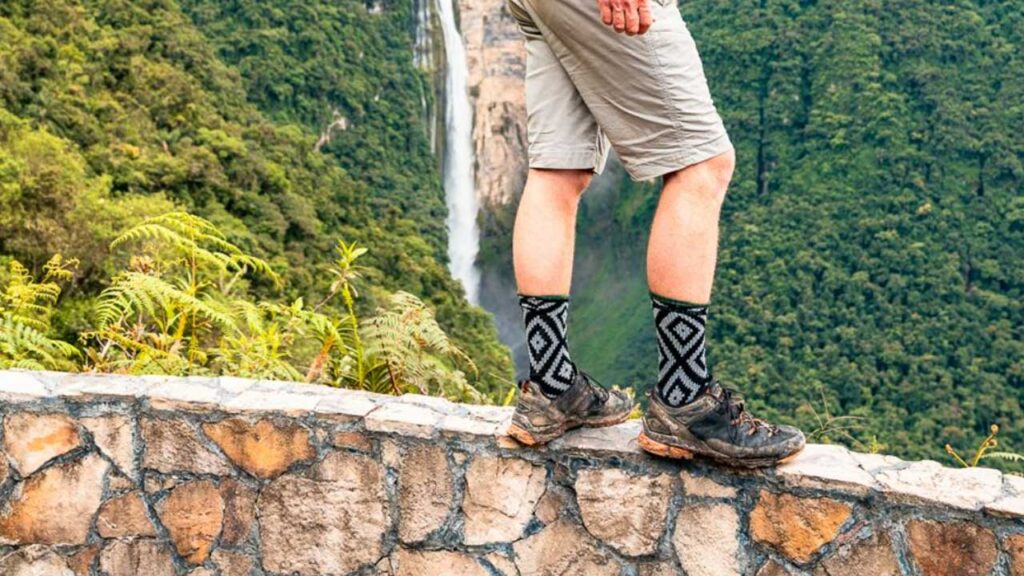
The same thing can be said for socks. Any hiker will tell you, your dogs are the first to start barkin'. Those old-school white cotton socks are going to bunch up and saturate. They will start rubbing your tissue raw after a good day's worth of miles on the trails.
Blisters are by far the most common injury out there. Nothing fancy or heroic, just plain old blisters. Minor blisters can be mildly but persistently annoying, and major ones can be flat-out painful and debilitating. A good, moisture-wicking, supportive hiking sock can save a lot of time sitting beside the trail, doctoring up those wounds.
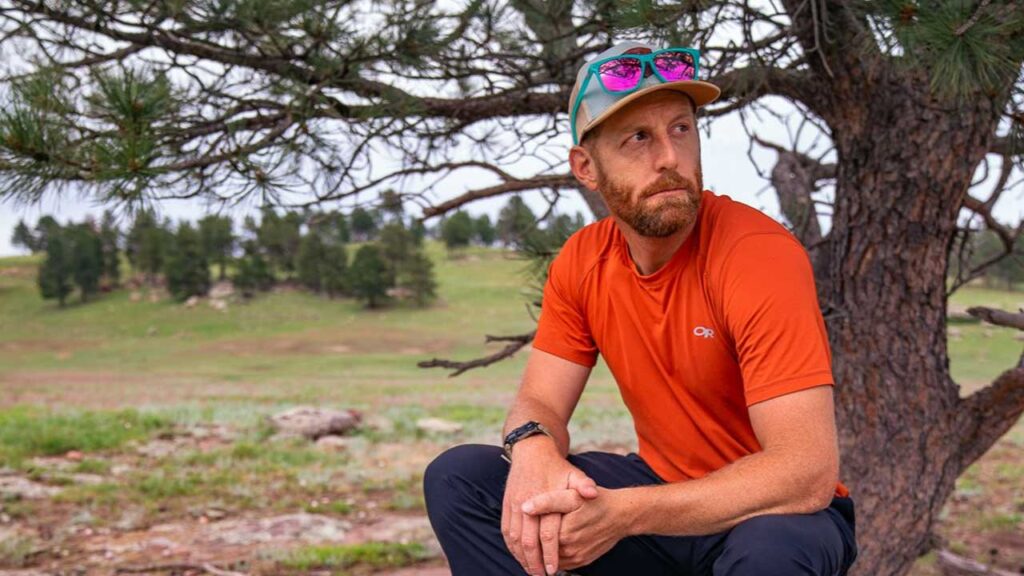
T-shirts Options for Hiking Clothes
Continuing the trend of next-to-skin layers to consider, the classic t-shirt has to be in the conversation early on. For most fair-weather days (note: even when it's cool out, hiking quickly warms you up) a t-shirt can totally suffice. There's no need to overthink this one. In most conditions, something that is light, airy, moisture-wicking, and that fits comfortably will do the trick.
If you're just strolling a few casual miles, or hanging around camp, then cotton will be fine. But if you're doing a long-haul, or are facing wet conditions, then continue to be wary of this natural fiber. Look instead for blends of polyester, nylon, and maybe even some merino wool.
Best Hiking Pants for the Trails
Some people get along great with shorts, but in general, I am a pants-wearing kind of guy. I just prefer the extra protection offered by a good pair of hiking pants. Even hiking in the sweltering Arizona heat pants are my preferred hiking clothes over shorts. Of course, pants do keep you warmer than shorts, but they also block a lot of the peak UV rays.
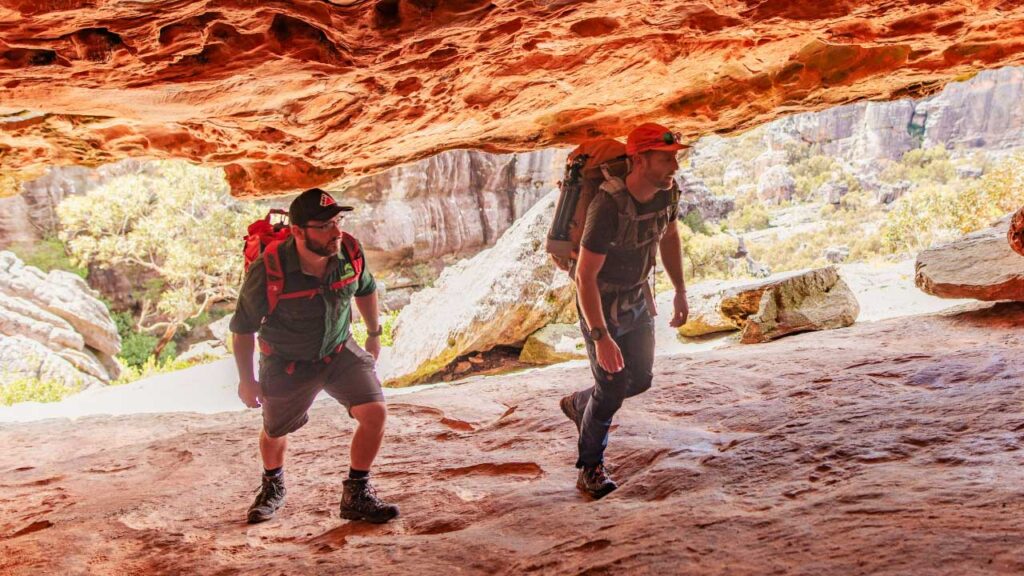
I personally find pants to be a versatile option for a full day of hiking. They feel comfortable during the cool early mornings and protect me from the sun throughout the afternoon. They once again feel nice when the sun starts to set and the temperature settles back down.
Steer clear of jeans or sweatpants for hiking clothes. Instead peruse the aisles for something more technical, abrasive-resistant, and as always, moisture-wicking/quick-drying. A hiking-specific pair of pants will also have lots of handy pockets. They will have ventilation, and they tend to be form-fitting. This boosts support and is nice for avoiding sloshiness on the trail.
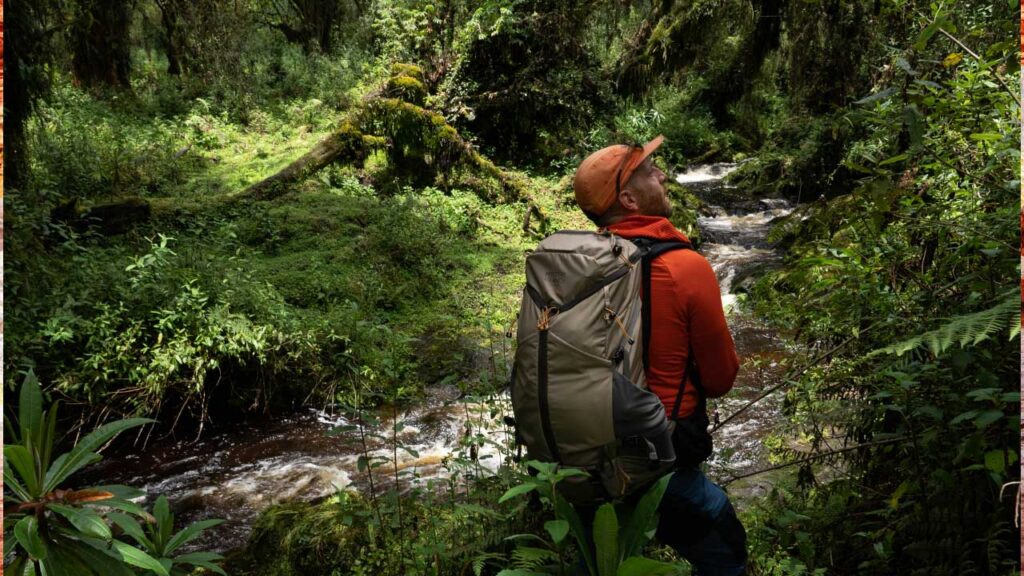
Long Sleeve Hoodies are Perfect for Hiking Clothes
I recommend investing in a technical long-sleeve hoodie. I got a ton of mileage out of my Outdoor Research Echo hoodie, for added sun protection.
There's only so much sunscreen you can apply, or carry on a multi-day hike. I like to have something that I can use to cover my arms, neck, and ears without overheating. I've also had a lot of recent success with Cotopaxi's full-zip Otero Fleece hoodie. It is a touch more insulated, which makes it more versatile for those sun-up to sun-down journeys in the backcountry.
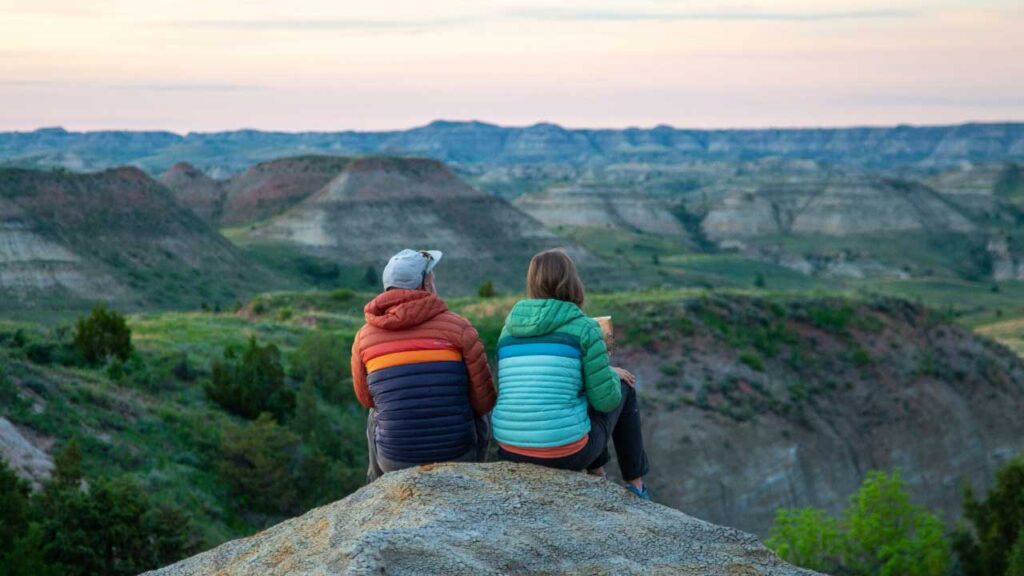
Additional Insulating Layers For Hiking
Building on our base layers and mid-layers, a reliable insulating layer becomes the next important piece of hiking clothes. I love me some down jackets! Lots of jackets will suffice. As you get more obsessed with efficient packing and layering, you'll probably steer towards down (or “puffy”) jackets. They have the best warmth-to-weight-ratio of anything on the shelves.
You'll find that a standard down jacket is super light, packs down to almost nothing, and is oh so cozy to wear around camp or at those alpine view points. There are many tiers to consider in terms of quality (pay attention to the “Fill-Power” and also how densely the jacket is stuffed to best tailor to the temperatures), but you don't have to break the bank in order to get something appropriate for most, non-expedition-style hikes. You can even save a few bucks by going with the synthetic equivalent: Primaloft.
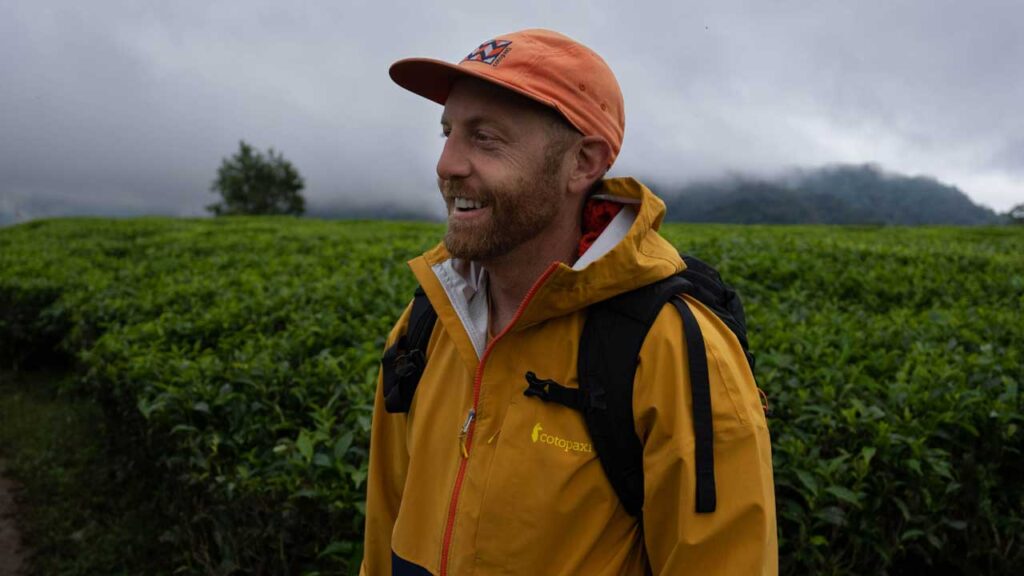
Every Hiker Needs a Reliable Rain Jacket
The weather forecast is but a best-guess, and conditions can change on a dime in the wilderness (especially in the mountains). So one thing that always goes into my pack is a high-quality rain jacket. I like to have it easily accessible so that I can quickly toss it on in the event of rain, snow, sleet, or other forms of precipitation that I don't even know about yet! If you want something that has heavy-duty waterproofing but isn't crazy expensive, check out the Cielo Rain Jacket by Cotopaxi.
I would just caution you to save your hardshell for when it is actually coming down. Things that block moisture out also tend to keep it in. That is to say, if you're hiking hard and sweating up a storm, then all of that internal wetness will sink into your beautiful layers that we've discussed so far. With that said, once I get to camp and am mostly stationary, I often like to throw on my rain jacket as a final layer of insulation.
If it does start pouring down while you're on the trail, then it can be a good idea to ditch a mid-layer or two before throwing on the rain jacket. It's probably better to hike a smidge on the cold side than to get completely saturated with sweat in the middle of your mission.
In terms of rain pants for hiking, I tend to make a personal judgment call depending on what I'm doing and what kind of climate I'm expecting. If you're just popping out for a day hike, then you can get away with not having rain pants. If you have a good pair of hiking pants, then those will provide a bit of water repellency, and they will dry quickly when the clouds do part.
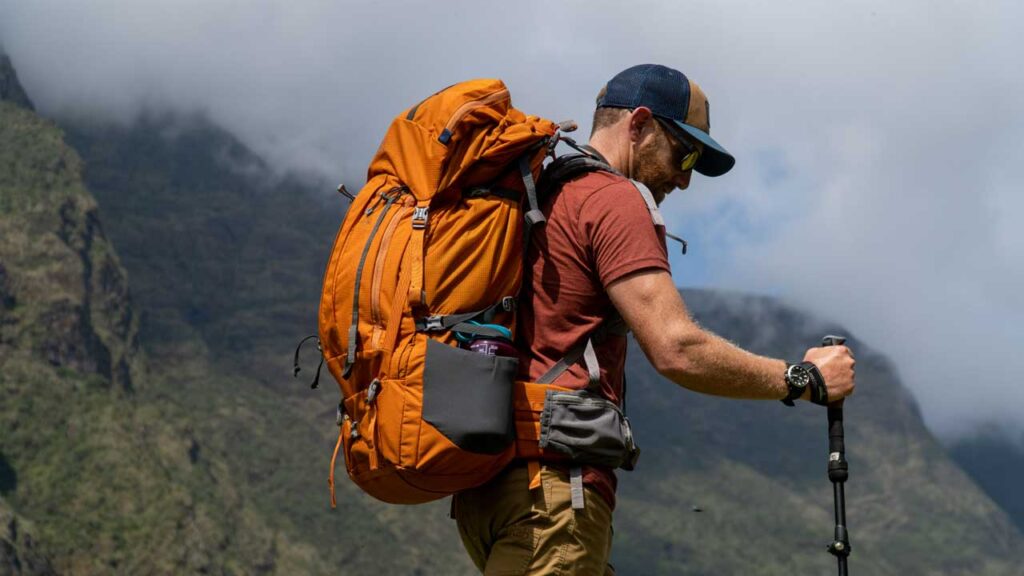
What Materials to Look For in Hiking Clothes
Let's do a quick recap of the things to look for when scouting the tags in an outdoorsy store, or shopping around online. Just because something is made by a popular athletic brand, doesn't mean that it will automatically be suited for high-intensity exercise – they often make casual clothes too.
So steer clear of cotton (for the most part), and hone in on things made entirely from, or with a mixture of: polyester (wicks moisture, drys quickly), nylon (keeps you cool and also wicks moisture), elastane (provides stretch/freedom of movement), and either sheep or alpaca wool (naturally quick-drying and odor-resistant). So basically, synthetic or wool-based is where you'll want to direct your attention and dollars.
Common Mistakes Regarding Hiking Clothes
An obvious but frequent mistake that many hikers make is simply not having sufficient clothing for the conditions that they're facing (or could face!). This means both weather-specific layers, and enough intermediate layers to rotate, and change into as the day(s) progress. But this doesn't just apply to brutal winter hikes or slogs over mountain passes.
It is more common for people to get into trouble in the summertime – often on a relatively simple outing. Just because you're planning a short hike on a currently sunny day, doesn't mean that the weather won't shift, or that the hike could get extended (either voluntarily or because of getting lost or injured).
Another one I see a lot of is people wearing too little on a hot sunny day. Those breezy tank tops might feel good initially, but pretty quickly your shoulders and neck are going to get roasted!
What To Prioritize When Buying Hiking Clothes
This is certainly open to personal interpretation, but I suggest you spend the money on a good pair of hiking underwear, a great pair of hiking socks (it's well-worth spending $15-30 on a single pair), a solid performance-focused mid-layer top, and then a trusted down, or otherwise insulated jacket. I think you can save some dough on hiking pants/shorts – those don't need to be complicated. You can also get by with a simple poncho until you're ready to invest in a high-tech rain jacket.
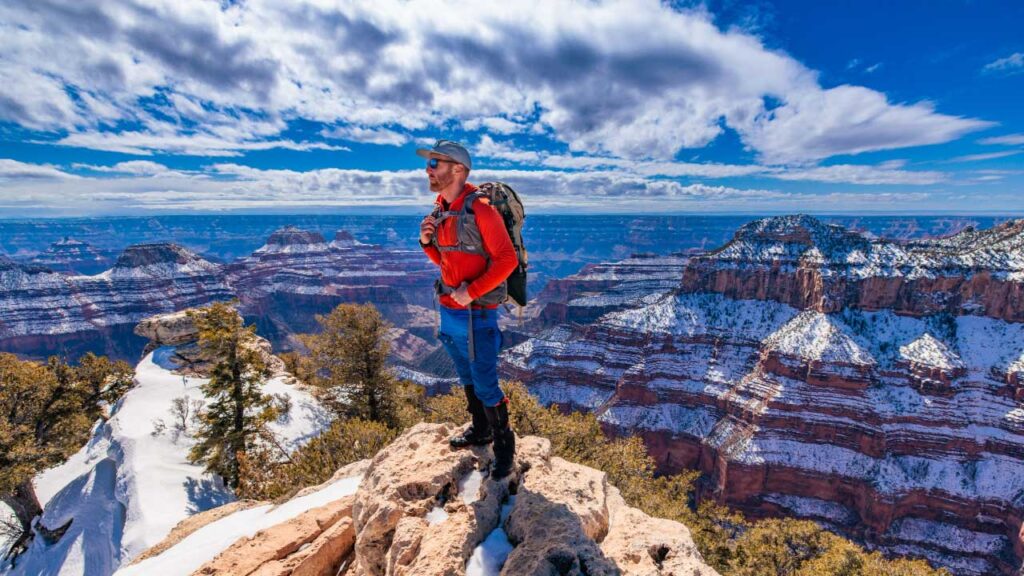
It is certainly nice to be decked out from head to toe, but don't wait until you have every possible piece of gear in your possession before you take to the trails. Keep this systematic layering system in mind, pick up what you can if you have some glaring gaps in your wardrobe, and slowly build out your kit from there.
If you're just getting started on your backcountry wanderings and want to learn more, check out my recent article, hiking tips for beginners. And as always, head on over to BackpackingTV for weekly videos on everything hiking and backpacking related.
Big Thanks to Mystery Ranch:
Mystery Ranch has been with BackpackingTV for several years now, and I'm so pumped that they keep making all my projects possible. I've had so much success with their packs on a multitude of adventures. I definitely recommend you check them out if you're looking for a solid day-hiking backpack, a multi-day trekking bag, or even something for hunting trips. Whatever you're into.

Gear used in this review includes:
Backpacks: Mystery Ranch Bridger 45L backpack, Mystery Ranch Bridger 65L backpack
Rain Jackets: Cotopaxi Cielo Rain Jacket
Down Jackets: Fuego Men's Hooded Down Jacket, Fuego Women's Hooded Down Jacket
T-shirts, Fleece and Layers: OR Men's ActiveIce Spectrum Sun T-Shirt, Cotopaxi Otero midlayer
Pants: Fjallraven Keb Trousers
Sunglasses: Wiley X



